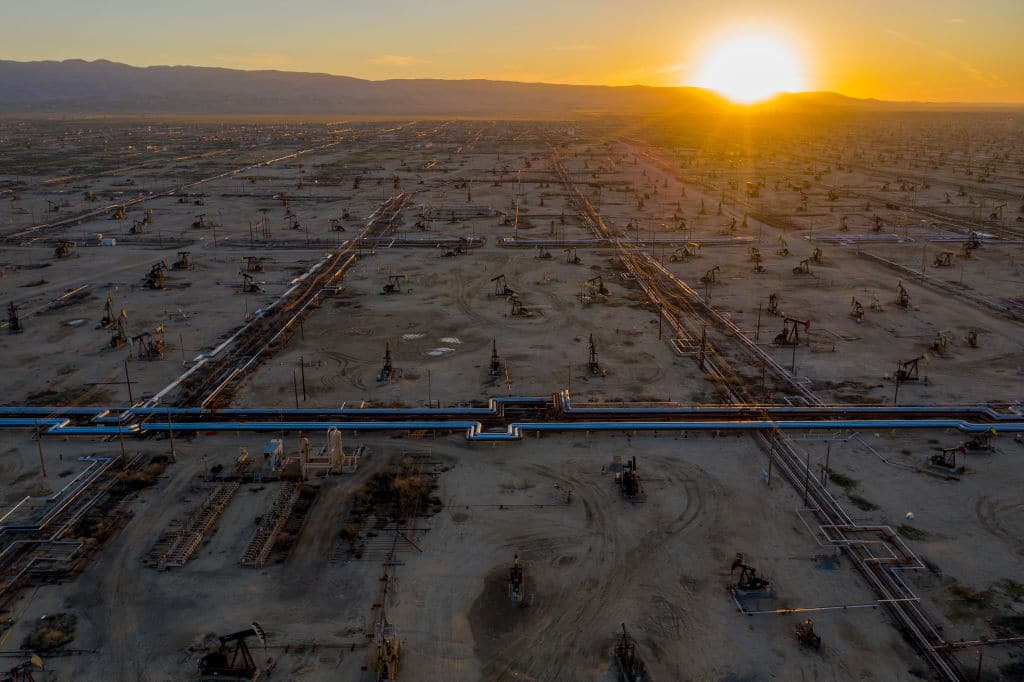This post was originally published on Eco Watch
According to a new analysis by the Energy Information Administration (EIA), the United States has produced the most crude oil globally for six years in a row — more than any nation in history during that time.
In 2023, the daily average crude oil production in the U.S. was a record 12.9 million barrels, a press release from EIA said. Its production broke the previous global record set in 2019 of 12.3 million barrels. In December, the average U.S. crude oil production hit a monthly high of more than 13.3 million barrels per day.
“The crude oil production record in the United States in 2023 is unlikely to be broken in any other country in the near term because no other country has reached production capacity of 13.0 million b/d. Saudi Arabia’s state-owned Saudi Aramco recently scrapped plans to increase production capacity to 13.0 million b/d by 2027,” the EIA said.
Last year, the U.S., Saudi Arabia and Russia together produced 32.8 million barrels of oil per day — 40 percent of global production. Since 1971, the three nations have produced the most crude oil, with the next three biggest producers — Iraq, Canada and China — pumping out 13.1 million barrels combined, barely more than the U.S. total.
U.S. yearly crude oil production plateaued and began to decline overall for decades following a peak of 9.6 million barrels per day in 1970. In 2008, it hit a low of five million barrels a day.
“Crude oil production in the United States began increasing again in 2009, as producers increasingly applied hydraulic fracturing and horizontal drilling techniques, and has increased steadily since,” the press release said. “The only exception to U.S. production growth since 2009 was in 2020 and 2021, when demand and prices decreased because of the economic effects of the COVID-19 pandemic.”
Recently, crude oil production in eastern New Mexico and western Texas — a region known as the Permian Basin — have been behind natural gas and crude oil increases in the U.S.
In 2017, Russia produced the most crude oil. However, its production growth has since fallen behind the U.S. Russia’s average annual production peaked at 10.8 million barrels per day in 2019.
In November 2022, Russia announced production cuts, along with other members of the Organization of the Petroleum Exporting Countries Plus (OPEC+). The following February, the country announced further voluntary cuts of half a million barrels a day.
“Although voluntary cuts have reduced recent production in Russia, we believe sanctions and voluntary actions by companies in response to the full-scale invasion of Ukraine have been the primary cause of the cuts. Actual cuts to production appear to be smaller than anticipated, however, and we estimate that production in Russia declined by only 200,000 b/d in 2023,” explained the EIA.
Saudi Arabia’s average yearly production peaked at 10.6 million barrels a day in 2022 — 1.3 million barrels fewer than the U.S. total for that year. Last year, Saudi Arabia’s crude oil production declined by roughly 900,000 barrels daily due to cuts by OPEC countries, as well as additional voluntary cuts made by the oil-rich country meant to offset less growth in demand.
“Production in Saudi Arabia could not exceed the 2023 production volume in the United States because state-owned Saudi Aramco’s stated production capacity is 12.0 million b/d, with about 300,000 b/d of additional capacity from its share of the Neutral Zone area shared with Kuwait,” the press release said.
The post U.S. Has Produced More Oil Than Any Country in History for Six Consecutive Years appeared first on EcoWatch.





0 Comments